#Popa langur
Text
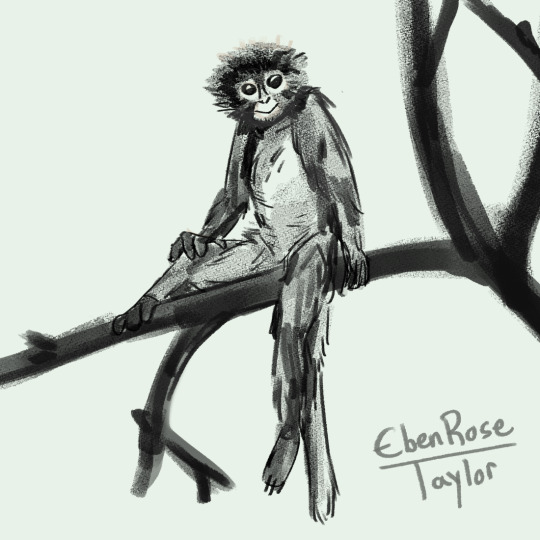
Repostober Day 10: Popa langur! I drew this three years ago because there was an announcement of a new primate species discovered in Myanmar and I was so excited to hear about it!
[ID in ALT]
#monkey#primate#popa langur#langur#illustration#animals#cute animals#sketch#artists on tumblr#eben art#repostober#this originally got 12 notes lets gooooo
18 notes
·
View notes
Text

trying to compromise with monkeysona colors (still tweaking, wip etc)
#talkys#silvery marmoset with popa langur adjacent colors#while also being an adjacent mix of one of my fav color combos ('blue' and 'white') while also including pink#gotta think tho bc i also dont like. the pale skin. >implying im white.
81 notes
·
View notes
Text

Now the jingle hop has begun
#heehee mean girls reference funny#I know christmas is over but im keeping this den up til New Years#ajpw den#dont question the amount of popa langurs I own#I was SUPPOSED to get at LEAST 20 of them but I forgot 😔
2 notes
·
View notes
Note
all kidns of strange and wonderful beafts in the world. how do we even know them all. wh
That’s the beauty of it: we don’t know them all! We’re constantly discovering new species! Granted, some of these discoveries weren’t completely unknown to science and were only misidentified as a different animal, but they’re still pretty cool nonetheless. Here are some mammals that were discovered in the past few years:

The Popa langur (Trachypithecus popa), first described in 2020.


The northern greater glider (Petauroides minor) and the central greater glider (Petauroides armillatus), upgraded from subspecies of the southern greater glider (Petauroides volans), to their own species in 2020.

The Ramari’s beaked whale (Mesoplodon eueu), described from a single beached specimen in 2021!
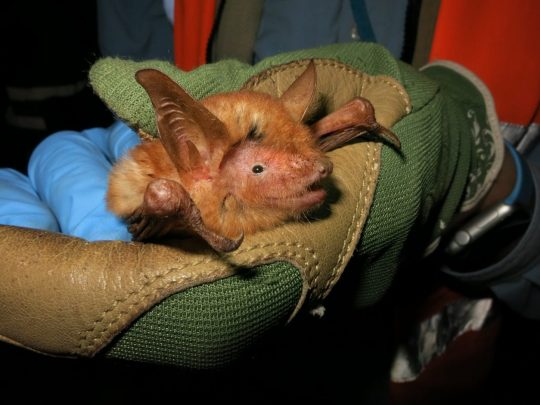
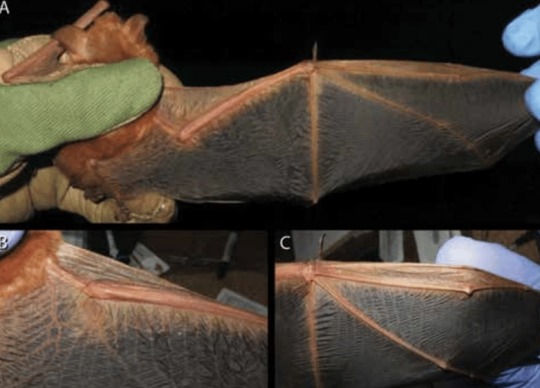
The striking Halloween colored Nimba myotis bat (Myotis nimbaensis), described in 2021.

The southern maned sloth (Bradypus crinitus), first described in 2022.

The Benin tree hyrax (Dendrohyrax interfluvialis), first described in 2022.


The eastern Mindanao gymnure (Podogymnura intermedia) and the Kitanglad gymnure (podogymnura minima), first described this year, in January 2023.
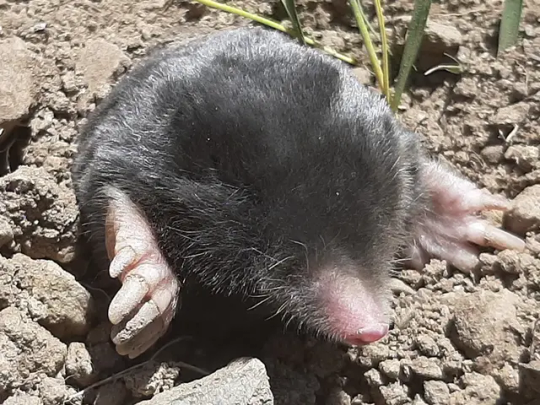
And the Talpa hakkariensis mole, described just last month in August 2023!
1K notes
·
View notes
Text
making all, if not most, of my ajpw animals/avatars inspired by cryptids with one animal as a crytpid hunter of sorts (not set on killing cryptids, just containing and conserving cryptids as well as keeping people safe
a list of my animals and the cryptid they are:
cow- alien
legendary lava eagle- phoenix
legendary timber eagle- birch ent
legendary crystal eagle- crystalline roc
viper- tatzelwurm
fox- kitsune
bunny: flower parasite
bunny: double eared skvader
spring flower bunny: nature spirit/ jackalope
quokka: park ranger
wolf: vampire
wolf: forest spirit
wolf: shuck
tiger: queensland tiger/ feline
deer: not deer/ deor
horse: kelpie
rainbow raccoon ( trans pride themed): pixie
monkey ( clown): normal monkey who's also a clown and has a weird ass tail
penguin: akhlut
python: winged snake
anteater: //
flying fox: jersey devil
popa langur: ahool
panda: elkhorn monster bear
// list is a wip. animals will be added as made; some may be subject to change //
7 notes
·
View notes
Text
The World is Amazing, Actually pt11
It’s Good News Wednesday, for at least the next few minutes while you read this.

A doctor in a cancer clinic in Arkansas forgave $650,000 in patient debt.
Dr. Atik attributed the large sum to the fact that no patient was ever denied treatment, regardless of whether or not they could pay. “Not for lack of health insurance or funds nor for any other reason,” he told the Arkansas Democrat-Gazette. “I’ve always considered it a high honor and privilege to be someone’s physician—more important than anything else.”

Over 500 new species were discovered in the year 2020
Among the hundreds of species identified was a monkey called the Popa langur, found on the extinct Mount Popa volcano in Myanmar.... Scientists analyzed the coloration of the Popa langur's skin and bones and sampled its genetics to compare it to related species.
"Monkeys are one of the most iconic groups of mammals, and these specimens have been in the collections for over a hundred years," Roberto Portela Miguez, the senior curator in charge of mammals at the museum and involved in identifying the new species, told the National History Museum. "But we didn't have the tools or the expertise to do this work before."

There’s a new building technique for skyscrapers that is incredibly ecofriendly
The U.S. Department of Agriculture (USDA) agrees. It cites estimates that even a four-story building made of mass timber would save emissions equivalent to taking 500 gasoline cars off the road for a year. This is because while concrete emits nearly its own weight in carbon dioxide during production, trees absorb carbon from the atmosphere to grow.
So when a plyscraper goes up, that carbon is locked away for decades. And when the building is finally torn down, the wood can be recycled or burned for energy.

Arctic Oil Drilling Plans Suffer ‘Stunning Setback’ as Almost ‘No One Shows Up’ For the Sale
No Seriously, Only 2 Very Small Companies Even Came To The Initial Bidding (And they were just there to mingle)
So There Will Be No Drilling Of The Arctic Wild (For Now)
Suck It, 45
Previous || Next
#planet earth#good news#plyscrapers#architecture#biodiversity#endangered species#monkey#popa langur#dr atik#cancer doctor#medical debt#health care#people are okay#arctic drilling#big oil backs out#nature conservation
67 notes
·
View notes
Photo

Newly Discovered Primate is Already Critically Endangered
There are only about 200 or so Popa langurs left in Myanmar.
The monkey is known for its gray fur and white eye rings.
©Thaung Win
8 notes
·
View notes
Text
CBS News: Scientists just discovered a new species of monkey — but it is already critically endangered
CBS News: Scientists just discovered a new species of monkey — but it is already critically endangered.
Look how cute!
0 notes
Link
Excerpt from this story from EcoWatch:
A lungless worm salamander, an armored slug and a critically endangered monkey were a few of 503 new species identified this year by scientists at London's National History Museum.
"Once again, an end of year tally of new species has revealed a remarkable diversity of life forms and minerals hitherto undescribed," Dr. Tim Littlewood, executive director of science at the museum, told the National History Museum. "The Museum's collection of specimens provide a resource within which to find new species as well as a reference set to recognize specimens and species as new."
As biodiversity rapidly declines across the globe, identifying new species comes with a time constraint, Littlewood noted in an article by the National History Museum.
"In a year when the global mass of biodiversity is being outweighed by human-made mass it feels like a race to document what we are losing," he shared.
Since 1900, the abundance of native species in land-based habitats has decreased by at least 20 percent, according to findings outlined in a United Nations Report. Over 40 percent amphibian species, nearly 33 percent reef-forming corals and over a third of all marine animals are threatened.
"503 newly discovered species reminds us we represent a single, inquisitive, and immensely powerful species with the fate of many others in our hands," Littlewood added.
Among the hundreds of species identified was a monkey called the Popa langur, found on the extinct Mount Popa volcano in Myanmar. According to the National History Museum, the skin and skull of the monkey were collected over 100 years ago.
53 notes
·
View notes
Photo

There’s a new monkey in town and his name is trachypithecus popa!
#trachypithecus popa#monkey#primate#Popa langur#popa langur: scientists discover new endangered primate species in myanmar#nature#Illustration#doodle#artists on tumblr#eben art
12 notes
·
View notes
Text


ngl i jst like making random furs
#popa langur and golden snub nosed monkey btw#furry#ota#lmk if anybody Want#i dont rlly make these w intent to sell i jst like practicing but if anyone wanted them id gladly sell them if that makes sense#bc who on earth is in the market fr monkey furs specifically (for example). anyway#a doodley
462 notes
·
View notes
Text
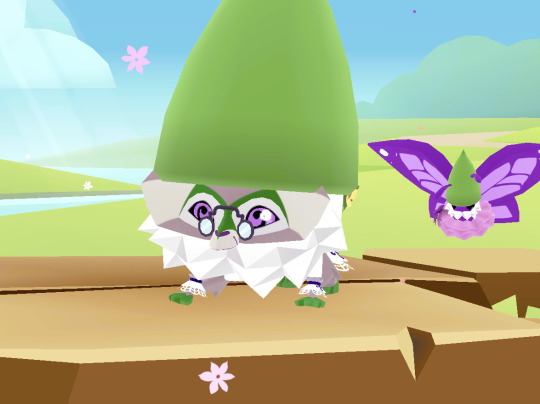
WHAT HAPPENED TO THE HANDS
The spirited cuffs shrink the popa langur’s hands 😭
18 notes
·
View notes
Text
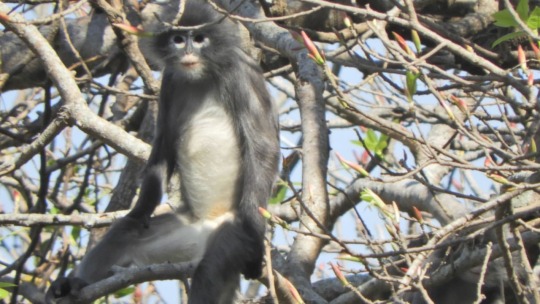
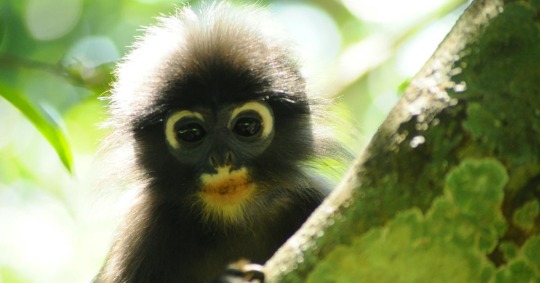
So this new monkey was discovered today... I Love them ❤️❤️❤️
They’re called popa langur and live in Myanmar :)
3 notes
·
View notes
Text
These Conservation Stories Prove 2020 Was Not All Bad News
https://sciencespies.com/nature/these-conservation-stories-prove-2020-was-not-all-bad-news/
These Conservation Stories Prove 2020 Was Not All Bad News
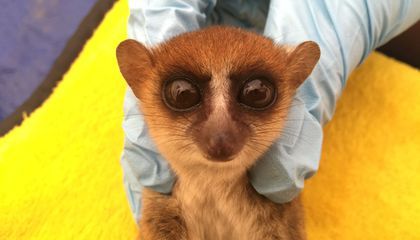
SMITHSONIANMAG.COM |
Dec. 14, 2020, 10:44 a.m.
Without a doubt 2020 will go down in the history books marred with loss in the face of a global pandemic attributed to zoonotic disease spillover from the illegal wildlife trade and a renewed public skepticism of scientific research and data. But quietly dotted throughout the 366 days of this chaotic leap year were a number of important findings and successes that showed that there are reasons to be optimistic for our planet. From new discoveries to indigenous-led protected areas, this year was not without its conservation wins. Here are just a few of the most unique and impactful conservation stories of 2020.
New Lemur and Langur Species Described




The newly described species Microcebus jonahi, a mouse lemur—the smallest primate genus.
(Dominik Schüßler)
Lemurs are considered one of the most endangered animals, with roughly 98 percent of classified species threatened with extinction. Despite their gloomy outlook, lemurs sparked a little bit of hopeful news this year when scientists officially described a new tiny and adorable species—Jonah’s mouse lemur or Microcebus jonahi, named after the respected Malagasy primatologist Professor Jonah Ratsimbazafy.
Researchers first captured this pocket-sized primate during a survey of northeast Madagascar in 2006. Researcher Marina Blanco explained the process of using lights at night to find the nocturnal creatures. “To study mouse lemurs in the wild, our team patiently searched for “eyeshine” through the thick and dense vegetation of the eastern rainforest at night. Occasionally, we could get a quick glimpse of an elusive lemur jumping out of sight. Determined to find out more about their biology, we briefly captured a few mouse lemurs at Mananara National Park. Even after a closer look, we could not put a name on it!”
Describing a new species that doesn’t look all that different from its relatives is no easy task. Scientists have recently improved the way they use genetic analyses along with morphology and other characteristics of closely related species to help decipher taxonomically-relevant differences. “It took years of sample analysis and teamwork to identify these mouse lemurs as a new scientific species. Mouse lemurs are evolutionary and ecologically amazing,” says Blanco. They are one of the most diverse groups of lemurs, with more than 24 species currently described. They occupy every available forest type and habitat in Madagascar. Morphologically, mouse lemurs display incredible genetic variation, indicative of unique evolutionary trajectories. “Thus, mouse lemurs, as species, are generally “microendemics,” restricted to specific forests and specialized in resources that may not be available anywhere else,” says Blanco.
As a result, the team was able to determine that this particular lemur is a separate species based on its distinct genetic makeup and some outward characteristics such as coloration and ear size.
The Popa Langur (Trachypithecus popa), was also described by scientists this year using a similar method. The research team conducted DNA analyses on collected droppings and used the findings in concert with morphological characteristics such as tail length to support a new taxa. Found only in a small region near Mount Popa in Myanmar, conservationists estimate that only about 200 individuals of this species exist.
World Leaders Sign 30 by 2030 Agreement

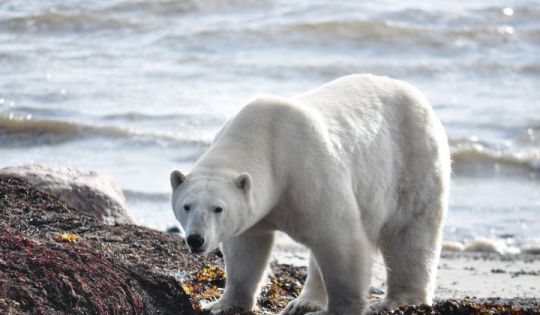


This habitat protection helps polar bears and the people who rely on the same ecosystem.
(Jason Hillier)
A new protected area in Northern Quebec was announced this November as a next-step in Prime Minister Justin Trudeau’s promise to the United Nations to safeguard 30 percent of Canada’s land and water by 2030 and as part of the Canada Nature Fund’s Target 1 Challenge. The $1.4 million project created the Arqvilliit Indigenous Protected and Conserved Area (IPCA) on the Canadian Arctic archipelago, commonly known as the Ottawa Islands in the Hudson Bay. The Inuktitut name for these islands, Arqvilliit, translates to: “a place where you will see bowhead whales.” This is not just a conservation win for arctic fauna such as whales and polar bears.
The permanent protection of IPCA is also a modest climate gain and a prime example of Indigenous engagement in conservation.
“We are in a way blessed to get this project” says Shaomik Inukpuk, the chairman of the steering committee for IPCA, and the town manager for the nearby Northern Village of Inukjuak in Nunavit. “It’s good for the people, it’s good for the polar bears, it’s good for the environment. It’s good for everybody,” he says.
“Now more than ever, Canadians know the value of nature and wild spaces. Our government is committed to conserving 25 percent of Canada’s land and inland waters and 25 percent of Canada’s oceans by 2025, and the Arqvilliit Indigenous Protected and Conserved Area is helping achieve that goal, as well as fighting climate change and halting biodiversity loss. It’s also an important step towards reconciliation with Nunavik Inuit by conserving the polar bear habitat, a species that is significant to Inuit culture and livelihood,” says Jonathan Wilkinson, the Minister of Environment and Climate Change. IPCA will continue to be managed and assessed by Inuit peoples as outlined in the Canadian government’s Indigenous Guardians program.
Indigenous-Led Protection Advances in the Arctic




Pakistan, home of Deosai National Park, is one of the countries whose leaders signed the pledge to protect 30 percent of land and water.
(Waqas Akhtar)
At the onset of 2020, the United Nations Convention on Biological Diversity drafted a framework calling on its international constituents to protect 30 percent of their land and seas by 2030. Many conservation organizations and scientists had proposed this protected area blueprint in previous years. Ahead of September’s United Nations Summit on Biodiversity, 71 world leaders signed the Leaders’ Pledge for Nature—a commitment to adopt the post-2020 global biodiversity framework. Then in October, the Environment Council of the European Union also committed to the target.
The multilateral environmental agreement was met with some skepticism, after all, none of the 2020 Aichi targets agreed upon in 2010 were met. “Every few years, governments gather to make solemn promises about the action they will take to defend the living world, then break them before the ink is dry,” noted the environmental writer George Monbiot. There are also a few considerations, particularly in the area of human rights violations, that this “30 by 30” agreement needs to reconcile. The hope is that the Covid-19 pandemic and its origins in biodiversity loss has finally lit a fire under these leaders to actually follow through on this most recent critical promise for protecting the planet.
Conservation Diversity Goes Viral




One of the Black Birders Week co-founders, Chelsea Connor, uses social media to showcase the valuable work that BIPOC contribute to conservation and encourage others to join STEM fields.
(Chelsea Connor)
The global pandemic and subsequent lockdowns forced many events and campaigns to migrate to digital platforms. One virtual event stood out most of all due to its thoughtful timing and ongoing impact. Amid racial justice movements calling for action following the death of George Floyd and many subsequent atrocities, black and BIPOC conservationists found an opportunity to highlight equality and equity issues in their field while inspiring others.
From their collaborative efforts, the inaugural Black Birders Week took flight on social media. One of the co-founders, Sheriden Alford, explained the idea to Smithsonian’s Earth Optimism: “After the incident involving Christian Cooper surfaced on the internet, a lot of the members in the group [BlackAFinSTEM] identified with the pressures of being black and carrying out our field tasks in a world that marginalizes minorities. We wanted to create a positive initiative…” And they succeeded. The reaction to Black Birders Week was so overwhelmingly positive that it launched additional spotlights on scientists of color across disciplines, including mammalogy, botany, and herpetology.
After the campaign, National Wildlife Federation announced, “#BecauseOfBlackBirdersWeek, the National Wildlife Federation is expanding its Conservation Fellowship & Intern Programs to create opportunities dedicated specifically for young biologists of color (students & recent grads) to help more #BlackBirders launch careers in conservation.”
Black Birders Week sparked many of these long-overdue conversations about the shortcomings of diversity initiatives and how we can all do our part to truly manifest a more equitable future for conservation.
Tasmanian Devils Make a Mainland Comeback
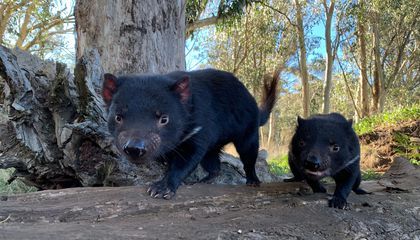



For nearly a decade, the Australian organization Aussie Ark has been working to save the iconic Tasmanian Devil from extinction.
(Aussie Ark)
Tasmanian Devils were eradicated from the Australian mainland some 400 to 3,000 years ago, depending on which paleontologist or natural historian you ask. But this year, the carnivorous marsupial with its devilish scream made a small comeback in the state of New South Wales on the country’s east coast.
For nearly a decade, the Australian organization Aussie Ark has been working to save this iconic creature from extinction. The species suffers rapid population declines in the face of habitat loss and a transmissible type of cancer known as Devil Facial Tumor Disease. Despite new findings that suggest evolution might help the species overcome this disease in the long run, the IUCN Red List of Threatened Species lists Tasmanian Devils as endangered and decreasing. This status hasn’t discouraged Aussie Ark’s efforts to breed in captivity and reintroduce the species. The goal is to reverse the species’ decline permanently. “In 100 years, we are going to be looking back at this day as the day that set in motion the ecological restoration of an entire country,” says Tim Faulkner, President of Aussie Ark.
The first trial release earlier this year reintroduced 15 captive-bred Tasmanian Devils. This September, eleven additional Devils received a red carpet-level release with a little help from the award-winning Australian actor Chris Hemsworth and his wife, Elsa Pataky.
Faulkner adds: “Not only is this the reintroduction of one of Australia’s beloved animals, but of an animal that will engineer the entire environment around it, restoring and rebalancing our forest ecology after centuries of devastation from introduced foxes and cats and other invasive predators. Because of this reintroduction and all of the hard work leading up to it, someday we will see Tasmanian devils living throughout the great eastern forests as they did 3,000 years ago.” More releases are planned to ensure the species’ chances of success.
youtube
Honorable Mentions
Here are a few honorable mentions to read more about when you need a healthy dose of optimism in your day.
Scientists rediscovered a chameleon in Madagascar that was last seen 100 years ago.
The swift fox was reintroduced to Northern Montana’s Fort Belknap Reservation.
The Great American Outdoors Act was signed by the president and enacted into law.
A critically endangered smoky mouse that feared lost during bushfires was found alive in a New South Wales national park.
China’s Wildlife Trade Ban was expanded to the consumption of wild animals due to the ongoing Covid-19 crisis
A wild population of New Guinea’s singing dogs, believed to be extinct, were found.
Colorado voted to reintroduce wolves into the Southern Rocky Mountains.
#Nature
2 notes
·
View notes
Text
'Critically endangered' monkey and armored slug among 503 new species named in 2020
‘Critically endangered’ monkey and armored slug among 503 new species named in 2020
Popa langur, a critically endangered monkey that lives in Myanmar, is one of the newly described species.
(CNN) — A monkey that lives on the edge of an extinct volcano, an amphibian that breathes through its skin and an armored slug are among the 503 new species named by London’s Natural History Museum this year.
Due to the coronavirus pandemic, the museum may have been closed to the public for…
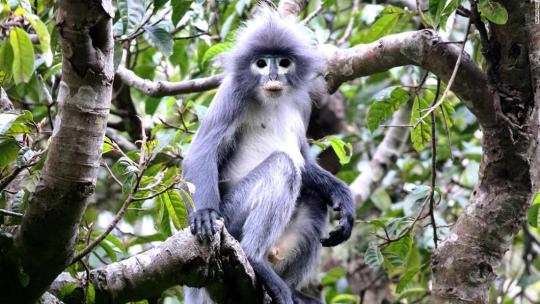
View On WordPress
1 note
·
View note